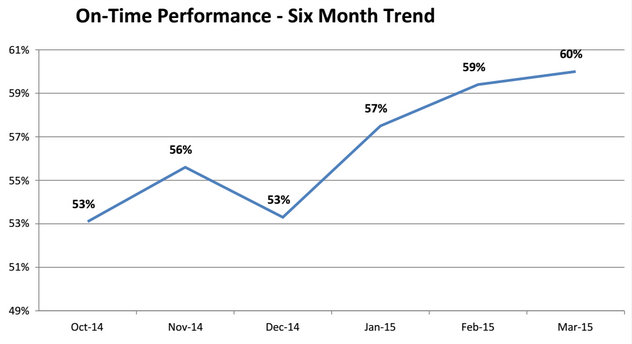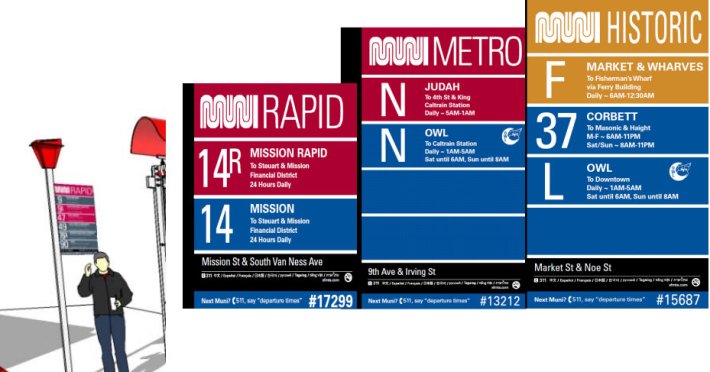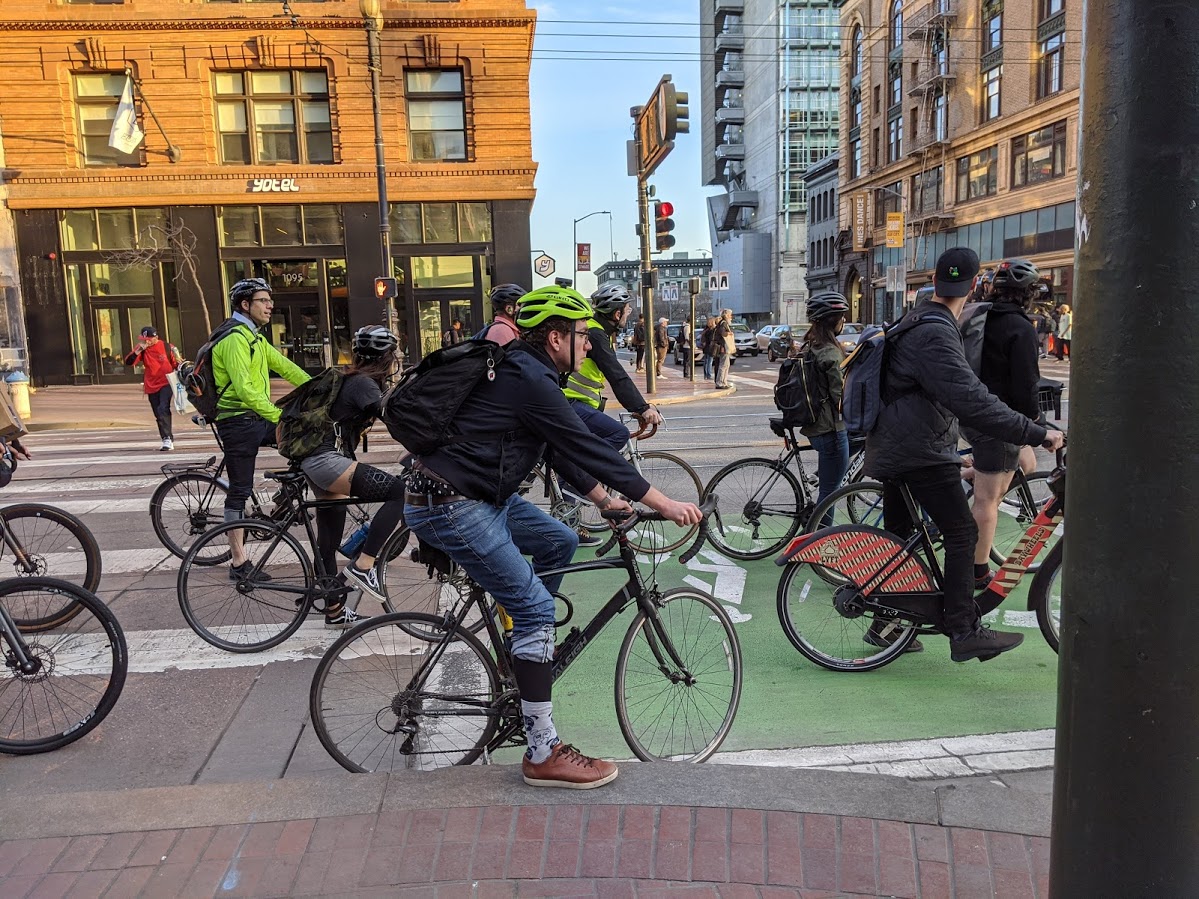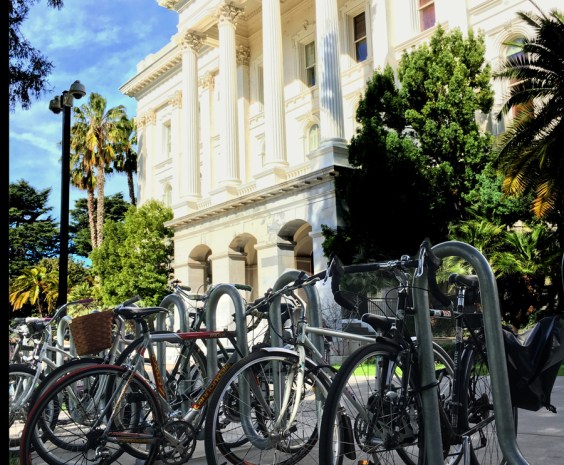
Muni is making major service improvements and shoring up the basics of running buses on schedule, and this time, officials say, the improvements will stick.
“This is long term, focused and systematic,” Muni Operations Director John Haley told reporters last week, calling upcoming "Muni Forward" upgrades the largest increase in service since the Market Street subway opened in 1980.
Most importantly, the SFMTA plans to roll out a package of service increases on April 25 as part of the ongoing Muni Forward campaign, previously known as the Transit Effectiveness Project, with improvements focused on its busiest lines. As the SF Chronicle reported, nine routes will run more frequently during the morning rush and seven will run more frequently during the evening commute, with several other routes getting more service at other times.
All told, Muni says, those improvements will affect about 165,000 daily riders. Two other waves of frequency increases will come to yet-to-be-named routes in the fall and next February.
Muni is also ramping up its re-branding efforts with changes to some route names. "Limited" lines will now be called "Rapid" lines to shed the "negative connotation," said Muni Forward Program Manager Sean Kennedy. Muni will also replace its shelter maps with a new, more legible map of the system, and install new signs to market the rapid routes.
The funding for Muni's service improvements can largely be chalked up to rising revenue streams from a booming economy. Will it last? In 2009, when it was called the TEP, Muni's improvement program was put on hold because of recession-era budget cuts.
Haley said the new service increases are built into the current two-year budget, and that he's optimistic that revenue will increase in future budgets. With the greater funding provided by the passage of Propositions A and B in November, Muni plans to continue replacing its aging bus fleet, resulting in fewer breakdowns. Haley said there's also greater pressure from the public to improve Muni as the city's transit-riding population grows.
"The bar is being raised," said Haley. "I'm not suggesting that we're there, but we're heading in the right direction."
It's too soon to say if the days of chronically-deferred maintenance, purchasing poorly-designed vehicles, and questionable management practices are behind Muni. Basic metrics, however, are looking up.
Since mid-March, Haley said Muni has made at least 98.5 percent of its service runs, meeting the minimum set by voters in Proposition E, which created the SFMTA in 1999. It's Muni's longest run ever of hitting that benchmark, according to Haley.
Muni has a full complement of bus operators for the first time in at least a decade, according to Haley, and overtime for bus drivers is down "dramatically." Light-rail operator positions aren't quite full, he said, but should get close by summer.
On weekends, Muni is also making it a priority to only deploy buses and trains that are in the "best of the best" mechanical shape, said Haley. The goal is to minimize Muni breakdowns on Saturdays and Sundays when many lines only come every 20 minutes, and the inconvenience of a missed bus hits riders harder.
Muni's on-time performance has trended upward recently, though it was still just 60 percent in March. Haley told reporters that on-time performance had increased consistently for the past six months. However, the data Muni shared with us revealed a dip in December. The 60 percent rate only looks good in comparison to the end of 2014 and is no better than what the agency sustained for most of last year.
Muni has never met the 1999 Prop E mandate of being on schedule at least 85 percent of the time.
In some cases, it seems, on-time performance can be improved simply by designing schedules to account for the realities of driving a bus all day. Haley handed reporters a chart showing how on-time performance improved on the 56-Rutland, one of Muni's most unreliable routes: After managers scheduled in a bathroom break for operators, the on-time rate jumped from an average of about 35 percent to 70 percent.
Muni is also moving forward with ongoing street infrastructure improvements, like colored transit-only lanes and transit priority signals, which have been installed on Mission Street and Geary Boulevard, and are coming to 19th Avenue. Muni officials emphasize that those upgrades, as well as completed improvements on lines like the 5-Limited (soon to be 5-Rapid), show that transit service isn't just being re-branded.
"This is a system that's getting well," said Haley.







